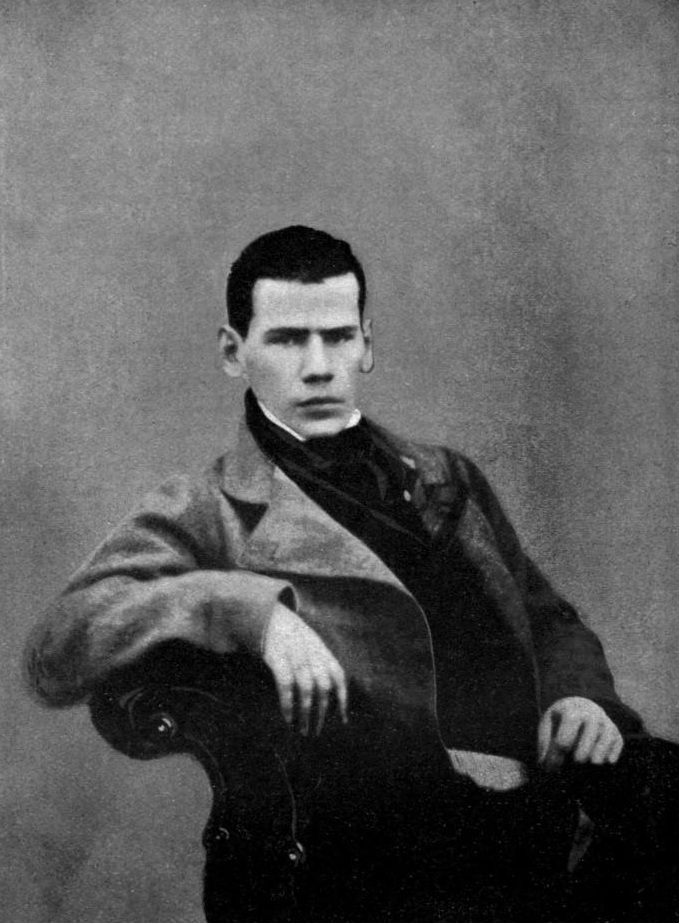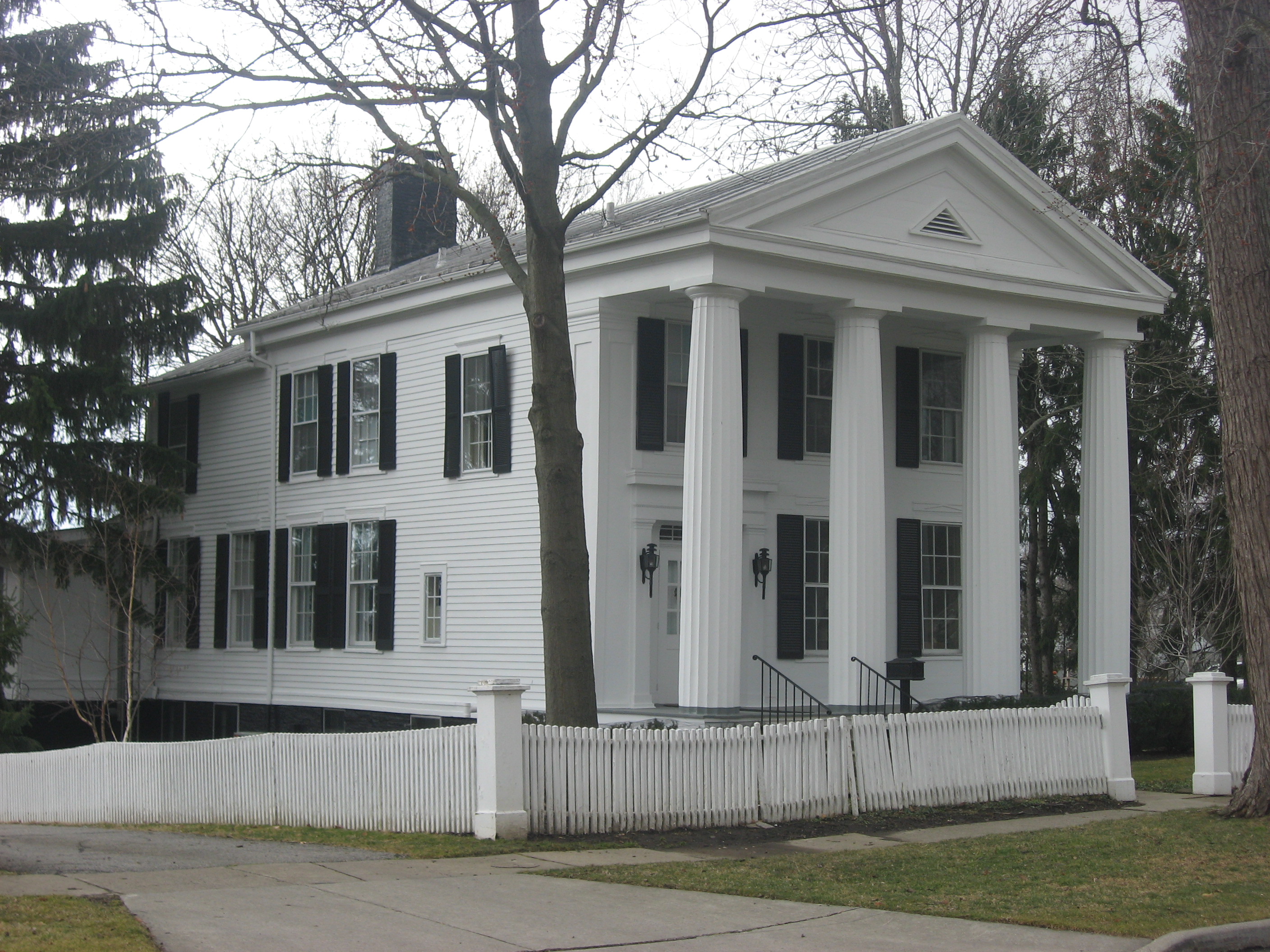|
Winesburg, Ohio
''Winesburg, Ohio'' (full title: ''Winesburg, Ohio: A Group of Tales of Ohio Small-Town Life'') is a 1919 short story cycle by the American author Sherwood Anderson. The work is structured around the life of protagonist George Willard, from the time he was a child to his growing independence and ultimate abandonment of Winesburg as a young man. It is set in the fictional town of Winesburg, Ohio (not to be confused with the actual Winesburg, Ohio), which is loosely based on Anderson's childhood memories of Clyde, Ohio. Mostly written from late 1915 to early 1916, with a few stories completed closer to publication, they were "...conceived as complementary parts of a whole, centered in the background of a single community."Phillips (1951), 17-18 The book consists of twenty-two stories, with the first story, "The Book of the Grotesque", serving as an introduction. Each of the stories shares a specific character's past and present struggle to overcome the loneliness and isolation ... [...More Info...] [...Related Items...] OR: [Wikipedia] [Google] [Baidu] |
Sherwood Anderson
Sherwood Anderson (September 13, 1876 – March 8, 1941) was an American novelist and short story writer, known for subjective and self-revealing works. Self-educated, he rose to become a successful copywriter and business owner in Cleveland and Elyria, Ohio. In 1912, Anderson had a nervous breakdown that led him to abandon his business and family to become a writer. At the time, he moved to Chicago and was eventually married three additional times. His most enduring work is the short-story sequence '' Winesburg, Ohio,'' which launched his career. Throughout the 1920s, Anderson published several short story collections, novels, memoirs, books of essays, and a book of poetry. Though his books sold reasonably well, '' Dark Laughter'' (1925), a novel inspired by Anderson's time in New Orleans during the 1920s, was his only bestseller. Early life Sherwood Berton Anderson was born on September 13, 1876, at 142 S. Lafayette Street in Camden, Ohio, a farming town with a population of a ... [...More Info...] [...Related Items...] OR: [Wikipedia] [Google] [Baidu] |
Künstlerroman
A ''Künstlerroman'' (; plural ''-ane''), meaning "artist's novel" in English, is a narrative about an artist's growth to maturity.Werlock, James P. (2010The Facts on File companion to the American short story Volume 2, p.387 It could be classified as a sub-category of ''Bildungsroman'': a coming of age, coming-of-age novel. According to ''Encyclopædia Britannica, Encyclopaedia Britannica'', one way a Künstlerroman may differ from a Bildungsroman is its ending, where a Künstlerroman hero rejects the everyday life, but a Bildungsroman hero settles for being an ordinary citizen. According to ''Oxford Reference'', the difference may lie in a longer view across the Künstlerroman hero's whole life, not just their childhood years. Examples by language German *Johann Wolfgang von Goethe's 1795 ''Wilhelm Meister's Apprenticeship'' *Ludwig Tieck's 1798 ''Franz Sternbalds Wanderungen'' *Novalis's 1802 ''Heinrich von Ofterdingen'' *Hermann Hesse's ''Demian'' (1919) and ''Klingsor's Last ... [...More Info...] [...Related Items...] OR: [Wikipedia] [Google] [Baidu] |
Ivan Turgenev
Ivan Sergeyevich Turgenev ( ; rus, links=no, Иван Сергеевич ТургеневIn Turgenev's day, his name was written ., p=ɪˈvan sʲɪrˈɡʲe(j)ɪvʲɪtɕ tʊrˈɡʲenʲɪf; – ) was a Russian novelist, short story writer, poet, playwright, translator and popularizer of Russian literature in the West. His first major publication, a short story collection titled ''A Sportsman's Sketches'' (1852), was a milestone of Literary realism, Russian realism. His novel ''Fathers and Sons (novel), Fathers and Sons'' (1862) is regarded as one of the major works of 19th-century fiction. Life Ivan Sergeyevich Turgenev was born in Oryol (modern-day Oryol Oblast, Russia) to Russian nobility, noble Russian parents Sergei Nikolaevich Turgenev (1793–1834), a colonel in the Russian cavalry who took part in the French invasion of Russia, Patriotic War of 1812, and Varvara Petrovna Turgeneva (née Lutovinova; 1787–1850). His father belonged to an old, but impoverished Turgenev ... [...More Info...] [...Related Items...] OR: [Wikipedia] [Google] [Baidu] |
Leo Tolstoy
Count Lev Nikolayevich Tolstoy Tolstoy pronounced his first name as , which corresponds to the romanization ''Lyov''. () (; ,Throughout Tolstoy's whole life, his name was written as using Reforms of Russian orthography#The post-revolution reform, pre-reform Russian orthography. ; ), usually referred to in English as Leo Tolstoy, was a Russian writer. He is regarded as one of the greatest and most influential authors of all time. Born to an aristocratic family, Tolstoy achieved acclaim in his twenties with his semi-autobiographical trilogy, ''Childhood (Tolstoy novel), Childhood'', ''Boyhood (novel), Boyhood'' and ''Youth (Tolstoy novel), Youth'' (1852–1856), and with ''Sevastopol Sketches'' (1855), based on his experiences in the Crimean War. His ''War and Peace'' (1869), ''Anna Karenina'' (1878), and ''Resurrection (Tolstoy novel), Resurrection'' (1899), which is based on his youthful sins, are often cited as pinnacles of Literary realism, realist fiction and three of th ... [...More Info...] [...Related Items...] OR: [Wikipedia] [Google] [Baidu] |
Feodor Dostoevsky
Fyodor Mikhailovich Dostoevsky. () was a Russian novelist, short story writer, essayist and journalist. He is regarded as one of the greatest novelists in both Russian and world literature, and many of his works are considered highly influential masterpieces. Dostoevsky's literary works explore the human condition in the troubled political, social and spiritual atmospheres of 19th-century Russia, and engage with a variety of philosophical and religious themes. His most acclaimed novels include ''Crime and Punishment'' (1866), ''The Idiot'' (1869), ''Demons'' (1872), '' The Adolescent'' (1875) and '' The Brothers Karamazov'' (1880). His '' Notes from Underground'', a novella published in 1864, is considered one of the first works of existentialist literature. Born in Moscow in 1821, Dostoevsky was introduced to literature at an early age through fairy tales and legends and through books by Russian and foreign authors. His mother died of tuberculosis on 27 February 1837, when ... [...More Info...] [...Related Items...] OR: [Wikipedia] [Google] [Baidu] |
Anton Chekhov
Anton Pavlovich Chekhov (; ; 29 January 1860 – 15 July 1904) was a Russian playwright and short-story writer, widely considered to be one of the greatest writers of all time. His career as a playwright produced four classics, and his best short stories are held in high esteem by writers and critics. Along with Henrik Ibsen and August Strindberg, Chekhov is often referred to as one of the three seminal figures in the birth of early modernism in the theatre. Chekhov was a physician by profession. "Medicine is my lawful wife," he once said, "and literature is my mistress." Chekhov renounced the theatre after the reception of ''The Seagull'' in 1896, but the play was revived to acclaim in 1898 by Konstantin Stanislavski's Moscow Art Theatre, which subsequently also produced Chekhov's ''Uncle Vanya'' and premiered his last two plays, ''Three Sisters (play), Three Sisters'' and ''The Cherry Orchard''. These four works present a challenge to the acting ensemble as well as to a ... [...More Info...] [...Related Items...] OR: [Wikipedia] [Google] [Baidu] |
Theodore Dreiser
Theodore Herman Albert Dreiser (; August 27, 1871 – December 28, 1945) was an American novelist and journalist of the naturalism (literature), naturalist school. His novels often featured main characters who succeeded at their objectives despite a lack of a firm moral code, and literary situations that more closely resemble studies of nature than tales of choice and agency (philosophy), agency. Dreiser's best-known novels include ''Sister Carrie'' (1900) and ''An American Tragedy'' (1925). Early life Dreiser was born in Terre Haute, Indiana, to John Paul Dreiser and Sarah Maria (née Schanab).Finding aid to thTheodore Dreiser papersat thUniversity of Pennsylvania Libraries/ref> John Dreiser was a Germans, German immigrant from Mayen in the Rhine Province of Prussia, and Sarah was from the Mennonite farming community near Dayton, Ohio. Her family disowned her for converting to Catholic Church, Roman Catholicism in order to marry John Dreiser. Theodore was the twelfth of thirteen ... [...More Info...] [...Related Items...] OR: [Wikipedia] [Google] [Baidu] |
Irving Howe
Irving Howe (né Horenstein; ; June 11, 1920 – May 5, 1993) was an American author, literary and social critic, and a key figure in the democratic socialist movement in the U.S. He co-founded and served as longtime editor of ''Dissent'' magazine. In 1976, he wrote the National Book Award-winning '' World of Our Fathers'', a history of East European Jews who immigrated to America. Early life and career Howe was born Irving Horenstein in The Bronx, New York in 1920. He was the son of Jewish immigrants from Bessarabia, Nettie (née Goldman) and David Horenstein, who ran a small grocery store that went out of business during the Great Depression. Irving's father became a peddler and eventually a presser in a dress factory. His mother was an operator in the dress trade. Irving attended DeWitt Clinton High School in northwest Bronx, where he was already a left-wing activist. He then matriculated to City College of New York (CCNY) in 1936. He graduated alongside Daniel Bell and ... [...More Info...] [...Related Items...] OR: [Wikipedia] [Google] [Baidu] |
Three Lives (book)
''Three Lives'' (1909) is a work of fiction written in 1905 and 1906 by American writer Gertrude Stein. Stein, Gertrude. ''Writings 1903–1932''. New York: Library of America, 1998, p. 928 The book is separated into three stories, "The Good Anna," "Melanctha," and "The Gentle Lena." The three stories are independent of each other, but all are set in Bridgepoint, a fictional town based on Baltimore. Synopses Each of the three tales in ''Three Lives'' tells of a working-class woman living in Baltimore. "The Good Anna" "The Good Anna," the first of Gertrude Stein’s ''Three Lives,'' is a novella set in "Bridgepoint" about Anna Federner, a servant of "solid lower middle-class south german stock." Part I describes Anna’s happy life as housekeeper for Miss Mathilda and her difficulties with unreliable under servants and "stray dogs and cats". She loves her "regular dogs": Baby, an old, blind, terrier; "bad Peter," loud and cowardly; and "the fluffy little Rags." Anna is the ... [...More Info...] [...Related Items...] OR: [Wikipedia] [Google] [Baidu] |
Alfred Stieglitz
Alfred Stieglitz (; January 1, 1864 – July 13, 1946) was an American photographer and modern art promoter who was instrumental over his 50-year career in making photography an accepted art form. In addition to his photography, Stieglitz was known for the New York art galleries that he ran in the early part of the 20th century, where he introduced many avant-garde European artists to the U.S. He was married to painter Georgia O'Keeffe. Early life and education Stieglitz was born in Hoboken, New Jersey, the first son of German Jewish immigrants Edward Stieglitz (1833–1909) and Hedwig Ann Werner (1845–1922). His father was a lieutenant in the Union Army and worked as a wool merchant. He had five siblings, Flora (1865–1890), twins Julius Stieglitz, Julius (1867–1937) and Leopold (1867–1956), Agnes (1869–1952) and Selma (1871–1957). Alfred Stieglitz, seeing the close relationship of the twins, wished he had a soul mate of his own during his childhood. Stieglitz ... [...More Info...] [...Related Items...] OR: [Wikipedia] [Google] [Baidu] |
Gertrude Stein
Gertrude Stein (February 3, 1874 – July 27, 1946) was an American novelist, poet, playwright, and art collector. Born in Allegheny, Pennsylvania (now part of Pittsburgh), and raised in Oakland, California, Stein moved to Paris in 1903, and made France her home for the remainder of her life. She hosted a Paris salon (gathering), salon, where the leading figures of modernism in literature and art, such as Pablo Picasso, Ernest Hemingway, F. Scott Fitzgerald, Sinclair Lewis, Ezra Pound, Sherwood Anderson and Henri Matisse, would meet. In 1933, Stein published a quasi-memoir of her Paris years, ''The Autobiography of Alice B. Toklas'', written in the voice of Alice B. Toklas, her life partner. The book became a literary bestseller and vaulted Stein from the relative obscurity of the cult-literature scene into the limelight of mainstream attention. Two quotes from her works have become widely known: "Rose is a rose is a rose is a rose", and "there is no there there", with the lat ... [...More Info...] [...Related Items...] OR: [Wikipedia] [Google] [Baidu] |







